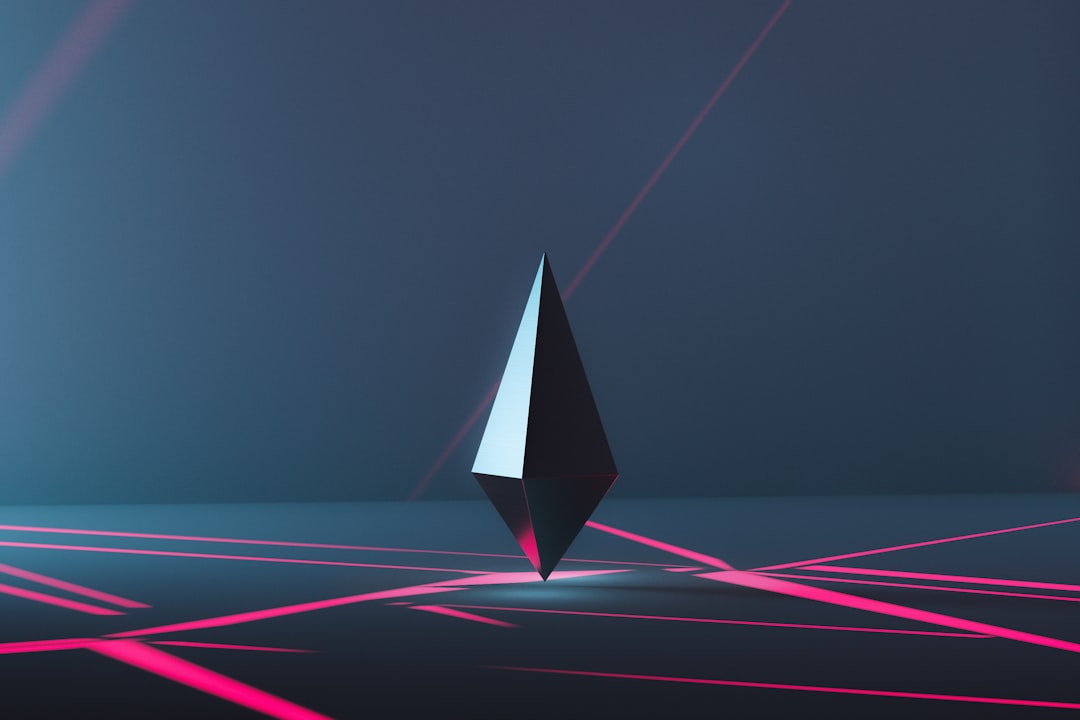Welcome to our blog post series exploring the fascinating intersection of art and technology! In this seven-part series, we will delve into the innovative world of blockchain and cryptocurrencies, and how they are revolutionizing the traditional art market. Brace yourself for an exciting journey that will open your mind to the endless possibilities that lie ahead.
For centuries, the art market has operated under a traditional model where physical artworks are bought and sold through galleries, auction houses, and private collectors. This model, while successful in many ways, has also come with its fair share of limitations and challenges. However, recent technological advancements have sparked a wave of disruption in the art world, leading to the rise of decentralized platforms and the tokenization of art assets.
But before we dive into the cutting-edge developments, let us take a step back and understand the traditional art market that has captivated art enthusiasts and collectors for centuries. The traditional art market is characterized by its reliance on intermediaries, primarily galleries and auction houses, to facilitate transactions between artists, collectors, and buyers.
While these intermediaries have played a crucial role in connecting artists with their audience, they often come with high fees and exclusivity that can hinder accessibility and transparency in the art market. The traditional market has also been known to be quite subjective, with gatekeepers determining what is deemed valuable and worthy of recognition.
However, in recent years, a new wave of technology has emerged, bringing with it the potential to disrupt and democratize the art market. This wave is led by cryptocurrencies, digital currencies that utilize cryptography to secure transactions and control the creation of additional units.
The rise of cryptocurrencies, such as Bitcoin and Ethereum, has enabled the creation of decentralized systems built on blockchain technology. Blockchain, in simple terms, is a decentralized and transparent ledger that records transactions across multiple computers or nodes. It ensures the immutability and transparency of the transaction history, providing a level of trust and security that traditional systems often lack.
Artists, collectors, and enthusiasts alike have recognized the potential of blockchain technology to transform the art market. It offers a new paradigm where artists can directly connect with their audience, bypassing intermediaries and gaining greater control over their creations and sales.
One of the most exciting aspects of this technology is the tokenization of art assets. Tokenization refers to the process of representing ownership or fractional ownership of an asset, such as a piece of artwork, through digital tokens on a blockchain. These tokens can be bought, sold, and traded, unlocking new possibilities for both artists and collectors.
Imagine a world where anyone can own a fraction of a masterpiece, where art becomes a liquid asset that can be easily traded or invested in. Tokenization has the potential to democratize the art market, making it more accessible and inclusive for artists and collectors of all backgrounds.
As we journey through this series, we will explore the emergence of decentralized art platforms that leverage blockchain technology and tokenization. These platforms are reshaping the art market, challenging traditional notions of ownership and creating new opportunities for artists to showcase and monetize their work.
Get ready to embark on a thrilling exploration of the changing landscape of the art market. We invite you to be open-minded, curious, and inspired as we uncover the revolutionary potential of blockchain and cryptocurrencies in the art world.
The Traditional Art Market
The traditional art market has long been dominated by established institutions, galleries, and auction houses. These traditional players have served as intermediaries between artists and collectors, determining the value and worth of artworks. This system has often been criticized for its exclusivity, elitism, and lack of transparency.
For many artists, breaking into the traditional art market can be a daunting and challenging endeavor. It often requires networking, connections, and the approval of experts in the field. Additionally, artists have limited control over the pricing and distribution of their own artworks, as they rely on intermediaries to handle these aspects.
Art collectors, on the other hand, face their own set of challenges in the traditional art market. They must navigate the opaque and subjective nature of art valuation, relying on the expertise of galleries and auction houses to make informed investment decisions. The lack of transparency in pricing and the potential for price manipulation can make it difficult for collectors to assess the true value of an artwork.
Furthermore, the traditional art market is often geographically limited, with major art hubs like New York, London, and Paris dominating the scene. This can make it challenging for artists and collectors from other regions to gain international recognition and exposure.
However, despite these challenges, the traditional art market has also provided a platform for countless artists to showcase their talent, gain recognition, and make a living from their artwork. Established galleries and auction houses have played a crucial role in nurturing talent, curating exhibitions, and facilitating sales.
So, while the traditional art market has its flaws and limitations, it has been the primary avenue for artists and collectors to engage with one another for centuries. However, the emergence of cryptocurrencies and blockchain technology has begun to challenge this status quo, offering new possibilities and opportunities for the art world.
So, while the traditional art market has its flaws and limitations, it has been the primary avenue for artists and collectors to engage with one another for centuries.
The Rise of Cryptocurrencies
Cryptocurrencies, such as Bitcoin and Ethereum, have taken the financial world by storm in recent years. These digital currencies have gained significant popularity due to their decentralized nature and potential for disrupting traditional financial systems. But what does this have to do with the art market, you may wonder?
Well, the rise of cryptocurrencies has had a profound impact on various industries, including the art market. Artists, collectors, and enthusiasts have begun exploring ways to leverage the benefits of cryptocurrencies in the art world.
One of the most notable aspects of cryptocurrencies is their ability to provide transparency and security in transactions. This feature is particularly appealing to artists and buyers in the art market, where there have been concerns about forgery, provenance, and the lack of transparency in pricing.
With cryptocurrencies, transactions can be recorded on a public ledger known as the blockchain. This immutable and transparent ledger ensures that the details of each art transaction are permanently recorded, eliminating the possibility of fraud or tampering. This increased transparency not only instills confidence in buyers but also helps artists establish their credibility in the market.
Moreover, cryptocurrencies offer a borderless and accessible means of transacting value. Traditionally, the art market has been dominated by a few major players and limited to a select group of wealthy individuals. However, with cryptocurrencies, anyone with an internet connection can participate in buying, selling, and investing in art.
Imagine a world where artists from remote corners of the globe can showcase their talent and sell their work to a global audience without the need for intermediaries or geographical limitations. Cryptocurrencies have the potential to democratize the art market, giving artists more control over their creations and exposing art enthusiasts to a diverse range of artistic styles and perspectives.
Furthermore, cryptocurrencies have provided artists with innovative ways to monetize their work. Through the use of non-fungible tokens (NFTs), artists can create unique digital assets that represent their artwork. These tokens can be bought, sold, and traded on various decentralized art platforms, allowing artists to generate income even from digital creations.
While the rise of cryptocurrencies in the art market is still in its nascent stages, there is an undeniable shift occurring. Artists, collectors, and art enthusiasts are increasingly embracing this new frontier, exploring the possibilities that blockchain technology and cryptocurrencies offer.
So, how will this trend continue to unfold? Will cryptocurrencies revolutionize the way we perceive, buy, and sell art? Only time will tell. But one thing is for certain – the rise of cryptocurrencies has opened up a world of possibilities for the art market, where creativity meets technology and innovation.
Moreover, cryptocurrencies offer a borderless and accessible means of transacting value.
Blockchain Technology in the Art Market
Now that we have explored the traditional art market and the rise of cryptocurrencies, let’s dive into the exciting world of blockchain technology in the art market. Blockchain, the underlying technology behind cryptocurrencies like Bitcoin and Ethereum, has the potential to revolutionize the way art is bought, sold, and valued.
At its core, blockchain is a decentralized and transparent digital ledger that records transactions across multiple computers. It eliminates the need for intermediaries like banks or galleries, ensuring that transactions are secure and transparent. This technology has the potential to disrupt various industries, and the art market is no exception.
One of the most significant advantages of blockchain technology in the art market is its ability to establish provenance and authenticate artworks. With the decentralized nature of blockchain, every transaction, ownership change, and even the creation of an artwork can be recorded and verified. This creates an unalterable and transparent chain of ownership, making it nearly impossible to forge or manipulate the authenticity of an artwork.
Imagine a world where every artwork is accompanied by a digital certificate of authenticity, stored securely on the blockchain. Buyers can easily verify the ownership history, exhibition records, and even the condition of the artwork. This level of transparency not only protects buyers from purchasing counterfeit or stolen artworks but also instills confidence in the entire art market.
Furthermore, blockchain technology can revolutionize the art market by enabling fractional ownership and the tokenization of art assets. Tokenization allows artworks to be divided into digital shares represented by tokens. These tokens can then be bought, sold, and traded on decentralized art platforms. This opens up a whole new world of possibilities for art enthusiasts, allowing them to invest in high-value artworks without the need for significant capital.
By tokenizing art assets, blockchain technology democratizes the art market, making it more accessible to a wider range of investors. This not only benefits individual art collectors but also provides artists with new opportunities for funding and exposure. Artists can tokenize their artworks, retain partial ownership, and benefit from the potential appreciation of their tokens in the secondary market.
Decentralization is another key aspect of blockchain technology that can reshape the art market. Traditional art platforms often impose high fees, limiting the opportunities for artists and collectors to connect directly. However, with decentralized art platforms powered by blockchain, artists can showcase their work, engage directly with collectors, and receive fair compensation without the need for intermediaries.
These decentralized platforms provide artists with a level playing field, empowering them to gain recognition and exposure based on the quality of their work rather than their connections or financial backing. Collectors, on the other hand, gain access to a diverse range of artworks from emerging and established artists, creating a more inclusive and diverse art market.
As we continue to explore the possibilities of blockchain technology in the art market, it’s essential to approach this new frontier with an open mind and curiosity. The potential for innovation and disruption is immense, and the traditional art market can undoubtedly benefit from the transparency, security, and accessibility that blockchain offers.
In the next section, we will delve deeper into the tokenization of art assets and the opportunities it presents for both artists and investors. So, let’s continue this journey and discover how blockchain technology can reshape the art market.
Buyers can easily verify the ownership history, exhibition records, and even the condition of the artwork.
Tokenization of Art Assets
As we continue our exploration of the intersection between art and blockchain technology, we come across an exciting concept known as the tokenization of art assets. This innovative approach has the potential to revolutionize the way art is bought, sold, and owned.
Tokenization essentially involves representing a physical or digital asset, such as a piece of art, as a digital token on a blockchain. These tokens can be bought, sold, and traded just like any other cryptocurrency. But what makes tokenization truly fascinating is the possibility it offers to democratize the art market.
Traditionally, investing in art has been limited to a privileged few, with high barriers to entry and complex transactions. However, by tokenizing art assets, ownership can be divided into smaller, more affordable shares, allowing a wider range of individuals to invest in art. This democratization of the art market opens up new opportunities for artists, collectors, and enthusiasts alike.
Imagine a scenario where anyone, regardless of their financial status, can own a fraction of a renowned artwork. Tokenization can make this dream a reality, enabling art lovers to invest in their favorite artists and artworks, even if they cannot afford to purchase them outright.
This concept also provides benefits beyond accessibility and affordability. Tokenization allows for greater liquidity in the art market, as tokens can be easily bought, sold, and traded on decentralized platforms. This liquidity could potentially lead to increased market efficiency, as buyers and sellers can interact directly, eliminating the need for intermediaries and reducing transaction costs.
Moreover, the use of blockchain technology ensures transparency and security in the tokenization process. Each token represents a verifiable ownership stake in the artwork, recorded on an immutable ledger. This transparency helps prevent fraud and ensures that the value of the tokens accurately represents the underlying artwork.
With tokenization, the art market undergoes a transformative shift, embracing the potential of blockchain technology to bridge the gap between art and finance. It sparks a sense of excitement and curiosity, as we ponder the future possibilities it presents.
Will tokenization disrupt the traditional art market, or will it find its place alongside traditional art ownership models? Only time will tell. But one thing is for certain – the tokenization of art assets has the potential to reshape the art world as we know it, opening up new avenues for artists, investors, and art enthusiasts to connect, collaborate, and thrive.
This concept also provides benefits beyond accessibility and affordability.
Decentralized Art Platforms
With the advent of blockchain technology and the rise of cryptocurrencies, the art market has witnessed the emergence of decentralized art platforms. These platforms aim to disrupt the traditional art market by providing artists, collectors, and enthusiasts with new opportunities and avenues to explore.
Decentralized art platforms leverage the power of blockchain technology to create a transparent, secure, and inclusive ecosystem for artists and art lovers alike. By utilizing smart contracts, these platforms enable artists to directly showcase and sell their artwork without the need for intermediaries like galleries or auction houses.
One of the key advantages offered by decentralized art platforms is the elimination of geographical barriers. Artists from all corners of the world can now showcase their work to a global audience, breaking free from the limitations imposed by physical galleries and local art scenes. This opens up a whole new world of possibilities and exposure for talented artists who may have previously struggled to gain recognition.
Moreover, these platforms enable artists to retain ownership and control over their work. Through the tokenization of art assets, artists can create digital representations of their physical artworks. These unique digital tokens, often referred to as Non-Fungible Tokens (NFTs), are recorded on the blockchain, providing proof of authenticity and provenance. This ensures that the artist’s work is protected from forgery and unauthorized duplication.
For collectors, decentralized art platforms offer an opportunity to discover and acquire artwork directly from artists, cutting out the middlemen and associated fees. Additionally, the transparent nature of blockchain technology allows collectors to easily verify the authenticity and provenance of the artwork they are interested in purchasing, mitigating the risks of buying counterfeit or stolen art.
The decentralized nature of these platforms also fosters a sense of community and collaboration. Artists can connect with like-minded individuals, share their creative process, and receive feedback and support from a global network of art enthusiasts. This not only enhances the sense of belonging but also encourages artistic growth and experimentation.
It’s worth noting that decentralized art platforms are still relatively new and evolving. As the technology continues to mature and gain mainstream acceptance, we can expect to see further advancements and innovative features in the space. This is an exciting time for artists and art enthusiasts alike, as the traditional art market undergoes a significant transformation.
Decentralized art platforms represent a revolution in the art market. With the power of blockchain technology, these platforms empower artists, connect global communities, and redefine the way art is created, shared, and valued. As we embrace this new era, let us continue to explore, support, and celebrate the boundless creativity that emerges from the intersection of art and technology.
This not only enhances the sense of belonging but also encourages artistic growth and experimentation.
Conclusion
As we conclude our exploration of the intersection between blockchain technology and the art market, it becomes evident that the potential for innovation and disruption is immense. The traditional art market has long been dominated by intermediaries, exclusivity, and opacity, making it difficult for emerging artists to break through and for collectors to navigate the market with confidence.
However, with the rise of cryptocurrencies and the advent of blockchain technology, we are witnessing a seismic shift in the art world. The decentralized nature of blockchain provides an opportunity to democratize the art market, allowing artists to directly connect with their audience and collectors to participate in the art scene with greater transparency and ease.
Tokenization of art assets opens up a whole new realm of possibilities for artists and collectors alike. By dividing artworks into digitally verifiable tokens, art can be fractionalized, allowing for broader ownership and investment opportunities. This not only expands access to art as an asset class but also offers a new way for artists to monetize their work and gain recognition.
Decentralized art platforms, fueled by blockchain technology, are emerging as vibrant communities where artists can showcase their work, receive feedback, and connect with like-minded individuals. These platforms break down the barriers of geography and gatekeepers, fostering a global network of creativity and collaboration.
Yet, as with any emerging technology, challenges and concerns remain. The art world must navigate issues surrounding provenance, authentication, and the potential for fraud in a digital landscape. Additionally, questions of how the traditional art market will adapt, and whether it will embrace or resist the changes brought about by blockchain, loom large.
At the heart of it all, however, lies a deep sense of excitement and possibility. Blockchain technology has the potential to redefine the relationship between artists and their audience, revolutionize the way art is bought and sold, and redefine what it means to own and appreciate art. The future of the art market is being shaped before our eyes, and it is an exciting time to be part of this journey.
So, whether you are an artist looking to chart a new path, a collector seeking to diversify your portfolio, or simply a curious observer, keep an open mind and explore the possibilities that blockchain brings to the world of art. The future is here, and with it comes the potential for a more inclusive, transparent, and vibrant art ecosystem.





